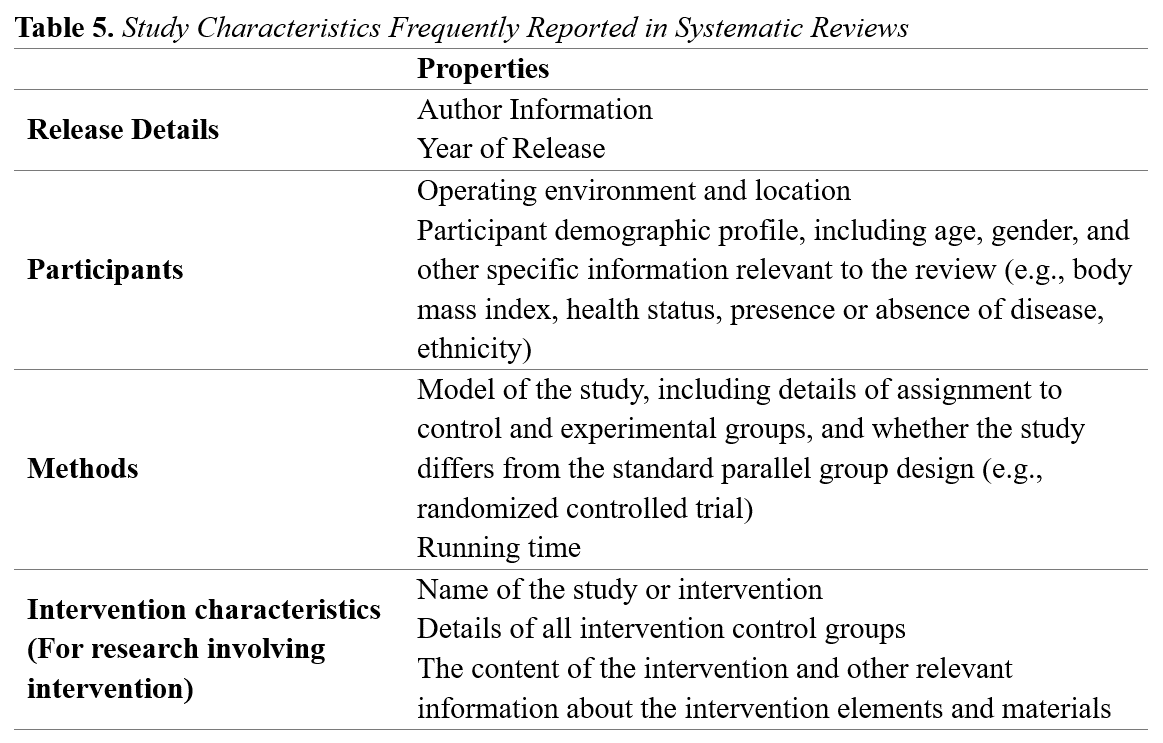Once the database searches have been completed and articles that meet the inclusion criteria have been identified, it will be necessary to document the characteristics of the included studies. Identifying the included studies will provide a significant level of convenience from the introduction of the review to the discussion section. Table 2 provides the information needed to create the bibliography of the articles included in the systematic review. Having a table where you can process this information and other information related to your research will save time during the reporting phase.

In the process of generating findings, it is essential to extract relevant themes for qualitative reviews. Using a standardized theme generation form will facilitate the generation and consistent analysis and reporting of data relevant to the review. It is recommended that members of the research team code one or two studies to test the theming form before conducting the entire data analysis process (MacMillan et al., 2019). Although it takes time to create an organized database or spreadsheet to store the information generated for the review, it saves researchers time as it prevents confusion later. It will also make the process of reporting compiled information and creating summary information tables faster, easier, and more transparent.

